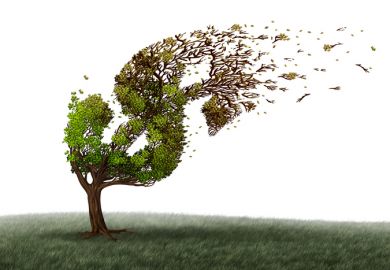We might be forgiven for yawning at anyone's efforts to bring alive the origins of agriculture. Bruce D. Smith's marvellous and beautifully illustrated book justifies why we all hold a debt to that extraordinary chain of events and pooled experience which enabled early humanity to move from a hunter-gatherer lifestyle to one with a fixed abode. Without that transition we would not now have the doubtful pleasure of the 20,000 or so items in the modern hypermarket.
How can archaeologists really know what went on 10,000 years ago? Can we be sure, when they say that agriculture emerged in seven different regions of the globe, that this is true? The Emergence of Agriculture begins with the development of techniques for detecting what was eaten in the ancient sites: sifting seeds from earth and clay pots, measuring their cell structures compared to "wild" strains, use of radiocarbon dating, and so on. This is potentially stolid fare, but Smith humanises it by highlighting the Great Men, and a few Women, who developed these techniques and pioneered their field application.
As one whose total contribution to practice was a day or two's work restoring mosaics in the British School of Rome in the mid-1960s and whose contribution to theory was to serve food at a dinner in Athens in the 1980s with a leading archaeologist, a British secret serviceman, a journalist and a feminist where we agreed eventually on Sir Arthur Evan's misogyny in reconstructing Knossos, I confess only a glimmer of understanding of the painstaking work involved.
Smith shines light on three approaches: biological, archaeological and technological. I am well armed for future dinners in Athens now.
The bulk of the book is a fascinating account, beautifully told, of work in seven regions of the world to pinpoint what plants and animals were domesticated, when and with what cultural effects. Agriculture first emerged 10,000 years ago in the Fertile Crescent, in the Middle East, then two or three millennia later in south and north China. Domestication occurred relatively recently in sub-Saharan Africa, the south central Andes, central Mexico and the eastern United States. These seven regions allow the book to introduce the reader to the vast range of plants and animals we now take for granted, from rice to potatoes, pigs to sheep.
The book ends with the big question: why did this development occur? His answer is that experimentation, probably dictated by climatic downturn, occurred in a common set of conditions with hunter-gatherers settling by lakes, rivers and seas. These relatively fertile conditions allowed time to experiment. Tell that to the modern biotechnologist on contract! Smith here appears to back into contentious terrain mapped out by Elaine Morgan in Descent of Woman and the excellent nutrition work in Michael Crawford's The Driving Force on aquatic foods and the evolution of the species.
By contrast, Geoff Tansey and Tony Worsley's book has a modern focus and is an ambitious attempt to describe the entire food system. Its value, as the only such book available, lies in its overview and depiction of the dynamics of the food system. Most useful are the many boxes scattered throughout the text. Referencing is a little weak, so students might need extra pointers.
The first of the book's three sections addresses the issue of needs, from biological to cultural. The second portrays the people who deliver food in the modern economy, farm-workers, traders, processors, caterers, consumers. The third, on the control of food, is where the book comes really alive. Food science and technology are presented as control mechanisms, rather than necessarily liberating choice.
The authors, one the founding editor of the journal Food Policy and the other a leading Australian nutritionist, have done the growing area of food policy a great service. No-one has had the patience or energy to produce a comprehensive view before this.
Useful texts like Mennell, Murcott and van Otterloo's The Sociology of Food usually come with discrete academic perspectives. The advantage, and the limitation, of this text is that it draws extensively on different discourses. Anyone who teaches any aspect of food can now offer this to students.
Tim Lang is professor of food policy, Thames Valley University.
The Emergence Of Agriculture
Author - Bruce D. Smith
ISBN - 0 7167 5055 4
Publisher - W. H. Freeman
Price - £19.95
Pages - 230
Register to continue
Why register?
- Registration is free and only takes a moment
- Once registered, you can read 3 articles a month
- Sign up for our newsletter
Subscribe
Or subscribe for unlimited access to:
- Unlimited access to news, views, insights & reviews
- Digital editions
- Digital access to THE’s university and college rankings analysis
Already registered or a current subscriber?



